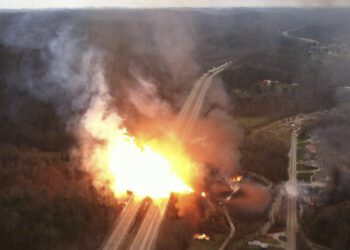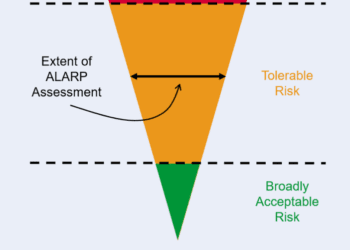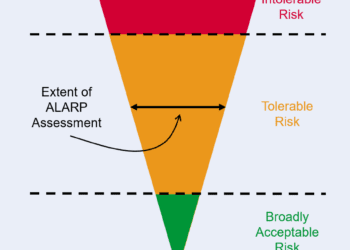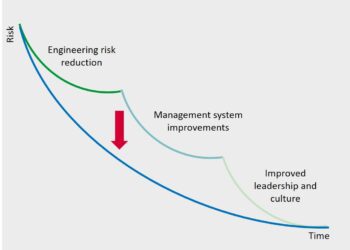Debunking the ALARP principle – four myths and realities
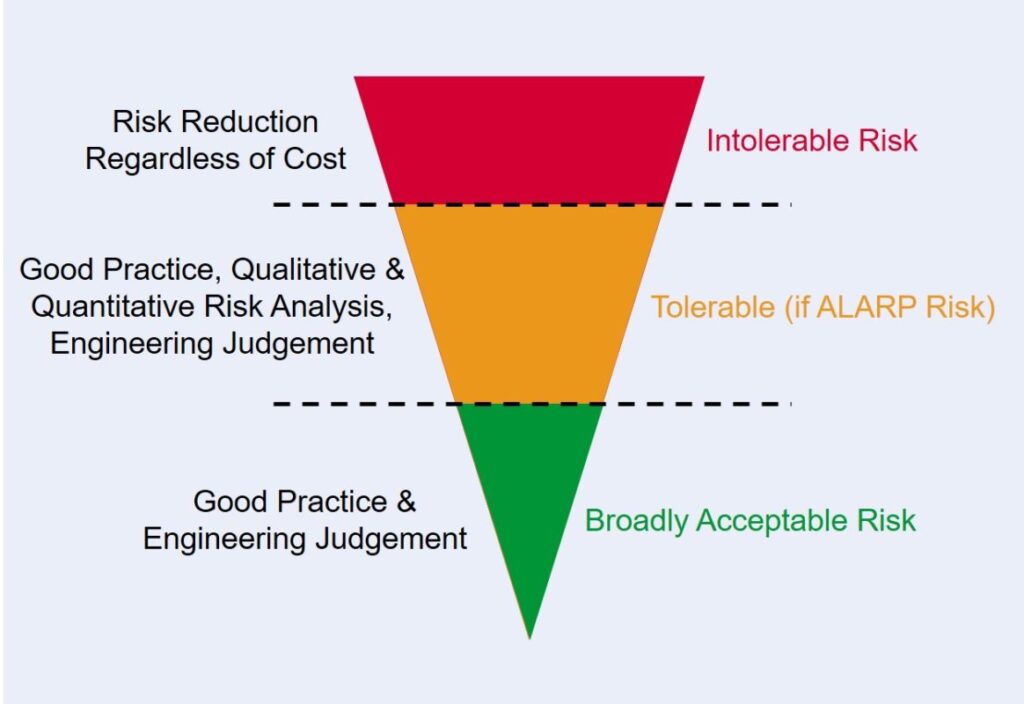
The ALARP principle recognises that no industrial activity is entirely free from risk and, quite sensibly, requires that risks are reduced to levels that are As Low As Reasonably Practicable, or ‘ALARP’.
The ALARP level is reached when the time, trouble and cost of further reduction measures become grossly disproportionate to the additional risk reduction obtained.
Determining if this is the case normally relies on ensuring compliance with accepted good practice, and evaluating options for improvement at key points throughout the lifecycle of a facility. While simply stated, the mechanics of when and how to apply the ALARP Principle, are for some, shrouded in mystery – perhaps because ALARP decision making is not black and white. As a result, there are many ‘myths’ or misconceptions about the ALARP Principle. Below, we debunk four common myths by portraying the reality of a good ALARP justification.
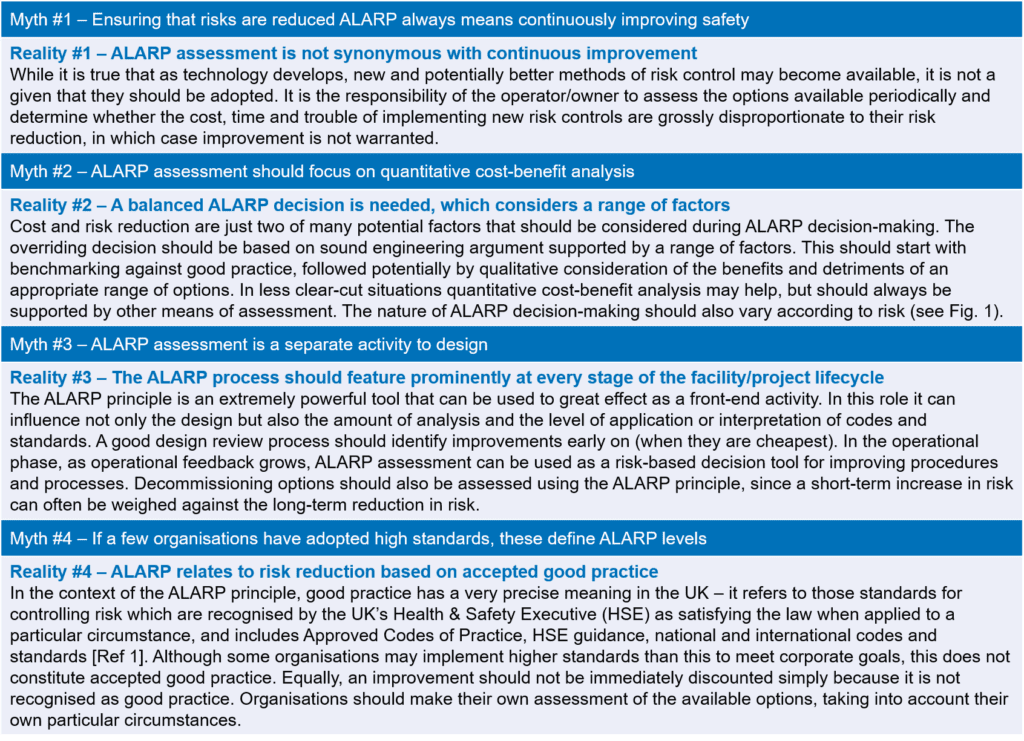
KEY TO SUCCESS
The key messages that come across are that ALARP decision-making should:
- Be applied throughout the whole project/facility lifecycle.
- Be integrated with existing safety processes.
- Consider accepted good practice.
- Identify options and consider a range of factors.
- Be underpinned by sound engineering argument.
The more complex the project, the more sophisticated the supporting ALARP process is likely to be, involving as it does a larger number of potentially affected stakeholders. Equally, the higher the associated risk, the more robust and comprehensive the supporting arguments and evidence should be.
CONCLUSION
To some, the ALARP principle may seem like another legislative hurdle. However, in the right hands, the ALARP principle is a very powerful means of choosing between improvement options or showing that no further improvement is warranted. As the ALARP principle is applied with increasing success, we can only hope that the myths surrounding its use will fade away.
References
1. http://www.hse.gov.uk/risk/theory/alarpglance.htm
This article first appeared in RISKworld Issue 20

